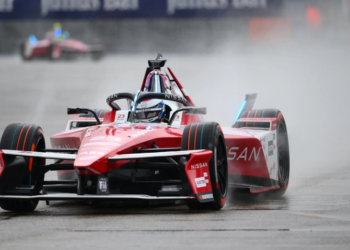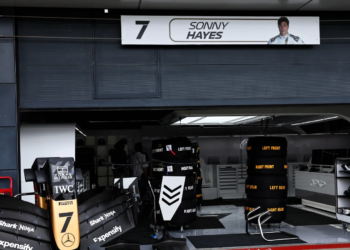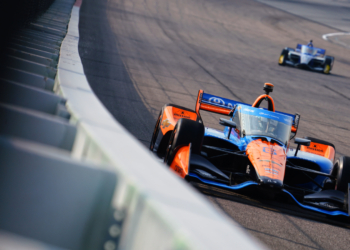It is upon us. The first official Formula 1 pre-season test gathering of 2017. And with it inevitably is our annual cacophony of questions swirling around our heads about the season that awaits; that we crave the testing will at last begin to answer.
There are at least as many as usual this time as all assemble in Barcelona. Are the cars produced from the new regs quicker, as advertised? How are the new – bigger and supposedly more durable – tyres behaving? How are the likes of Valtteri Bottas, Stoffel Vandoorne and Lance Stroll set to get on in new surroundings? Yet it’ll all be dwarfed by the big overarching question about which we’ll all desperately scan Montmelo matters for the first clues. The perennial one. Just who is quick and who is not?
But… interpreting F1 pre-season testing is rarely pure and never simple. Pitfalls are all around. Here though are a few considerations from meandering experience that may help us in our interpretations:
Don’t (necessarily) read much into the headline lap times
The ultimate. Even though the media headlines will probably base themselves on them, and the topline lap time order will be circulated liberally, you shouldn’t allow yourself to be sucked in. For our purposes they are the crudest of crude measures. We know this one. We’re always told.
The days of middling-to-small teams running under the weight limit to attract some sponsors are in the past, but still any number of things can skew the headline times by several seconds – fuel loads, the tyre compound, the state of the tyres, the track conditions, the programmes, the aero parts bolted on, the extent that the engine is turned up… Not only are many of these things unknown to us on the outside some of them are unknowable.
Any number of things can skew the headline times by several seconds. Not only are many of these things unknown to us on the outside some of them are unknowable
And as Karun Chandhok warned recently they might not even be trying especially to go quick this time. “With such big rule changes, every team will have a huge list of things to validate and the pressure to correlate CFD, windtunnel and simulation figures will be huge” he said. “The first four days of pre-testing in particular aren’t about looking for ultimate performance, but trying to get the car reliable and balanced.”
Whatever else is said, ‘don’t read much into the headline times’ should run through your considerations as if in a stick of rock.
F1 steps through the looking glass
You can’t really rely on what the drivers and teams tell us either. I once was told that in F1 testing that those who think they’re doing well will talk themselves down, and those who think they’re doing badly will talk themselves up. It makes sense, as in either case it is in their interests to conceal what’s going on. And it hasn’t been the worst gauge in practice either.
The desire to conceal goes deeper too. “I think motor racing is war,” said engineering veteran Frank Dernie to this end some years ago. “It’s the same spirit, it’s the team spirit of a group of people pulling together to try to beat somebody else. We’re not trying to kill them but we are trying to beat them via whatever means we have at our disposal.
I think motor racing is war. We’re not trying to kill them but we are trying to beat them via whatever means we have at our disposal. And we go through the same secrecy and techniques of deceit – Frank Dernie
“And we go through the same secrecy and techniques of deceit, and try to make people think that if we’ve for example discovered a new wing that we’ve actually done a new rear suspension geometry so they don’t actually sort out why we’re going quicker, if we are.”
Granted, with just two tests to get right a radical reg shift for this year there should be less messing about than usual – with no time to waste teams will want a good grasp of where they are. But the above still applies to an extent.
Listen to the mood music
So, you may be asking at this point, what can we trust? There will be attempts to interpret lap times controlling for the above variables, such as by taking averages and seeking to equalise the tyre compound and fuel weight (though beyond the length of the run – and making the assumption they only had enough aboard for those laps – there’s little way of knowing the latter). They can be a better guide. But the most reliable guide of all is simply the mood music.
Yup, the world on the street. The grapevine. There are plenty of ways of getting this – reading between the lines of what is said, or else getting off the record opining. Some factor in the apparent atmosphere, even the facial expressions, in each team. The assembled press will likely tell us what they garner. The old ways, in this case, are the best.
Don’t reject the evidence of your eyes and ears
There’s another way that the old ways are the best. Just as the legendary scribe of yore Denis Jenkinson used to insist on watching F1 cars from trackside, many present in Barcelona will spend time out there, and there they can tell a lot.
Just as the legendary scribe of yore Denis Jenkinson used to insist on watching F1 cars from trackside, many present in Barcelona will spend time out there, and there they can tell a lot
Which cars are nailed to the road; which are lairy. Which go where the driver wants with the rear end right in line. Which carries the highest revs through quick turns. Who gets on the throttle soonest. Which has the smoothest traction; the most stable braking. Which looks nimble and responsive in the slow stuff. Which instead has the driver sawing on the wheel or having several stabs on the throttle.
These observers will probably be right about it too. Look out for what they have to say and write.
Who keeps on running?
It may sound silly, but there is one column in those maligned fastest headline lap time tables that I mentioned that likely tells us more than the rest. The laps completed.
Think back a couple of years to the opening test of 2015, in Jerez. All gathered wondering – hoping, perhaps – that Mercedes’s pomp of the previous year would be pricked. Within a few hours of the first day Merc had rather rudely dispelled them of the notion. And did it with the car’s sheer ubiquity on track.
“This is a brand new car, brand new everything…and for [Nico] Rosberg to be out there and putting in 50 laps on the first morning of testing is almost unheard of,” said an observing Ted Kravitz. Christian Horner called it “taking the mickey". And indeed Merc went on to cream the year.
I think lap times are not that important in the end – it’s the amount of laps – Sebastian Vettel
A reliable car isn’t necessarily a quick one of course, but it still counts for plenty. It indicates a thorough preparation which reflects well on the team generally, and time they otherwise would have spent fixing reliability glitches can be used on improving performance instead. A reliable car also frees up time to brush up on operational matters such as pit stops. With the limited time and new regs it all becomes especially beneficial this time.
As Sebastian Vettel pointed out during the Jerez test mentioned, “I think lap times are not that important in the end – it’s the amount of laps”.
The flipside is true too – in 2014 we got our first indication that Red Bull was about to relinquish its dominant position when in testing its machine barely was able to get to the end of the pit lane without conking out. Twelve months later we knew that McLaren Honda was having a difficult re-birth on similar grounds. Both were borne out when it mattered.
Speed test
There’s another set of dry numbers that will tell us something – the marks set through the speed traps. Particularly on whether the straggling power units of Renault and Honda have indeed made progress relative to the Mercedes and Ferrari benchmarks.
Expect a technical controversy
We’ve started early on this one. The arguments about trick suspension systems rumble on, though as Force India’s Andy Green suggested it’ll likely be in the Melbourne season-opener proper rather than testing where that comes to a head.
There may be more things to fall out about though, particularly as there’s a whole new set of regulations to scan for loopholes. Quintessentially in 2009 we had double diffusers, while in 2013 testing we had (apt) hot air about exhaust rules. Watch out for red herrings too though, as in 2014 all got into an argument about McLaren’s ‘suspension blockers’ innovation. That you likely don’t remember them indicates that they didn’t work.
And sure enough when the Mercedes debuted this week Mark Gallagher noted that “Merc's Seagull wing will have nine aero departments scurrying to their rule books.”
Listen out too for claims from rivals of something ‘not being within the spirit of the rules’. That’s their admission that they can’t get it banned. And that they’ll likely have their own version on the car come May.
The tell
In among all of this confusion there’s one thing we can judge with reasonable certainty though. That if Ferrari goes for a low fuel glory run on the final day then it knows it’s in trouble.
But then again whatever happens in Barcelona’s opening four days of running, an F1 season like all good stories doesn’t give away its plot with certainty in the opening paragraphs. And in our quest for answers we’ll no doubt stumble across yet more questions.
The adage applies here. We start off confused and end up confused on a higher level.






